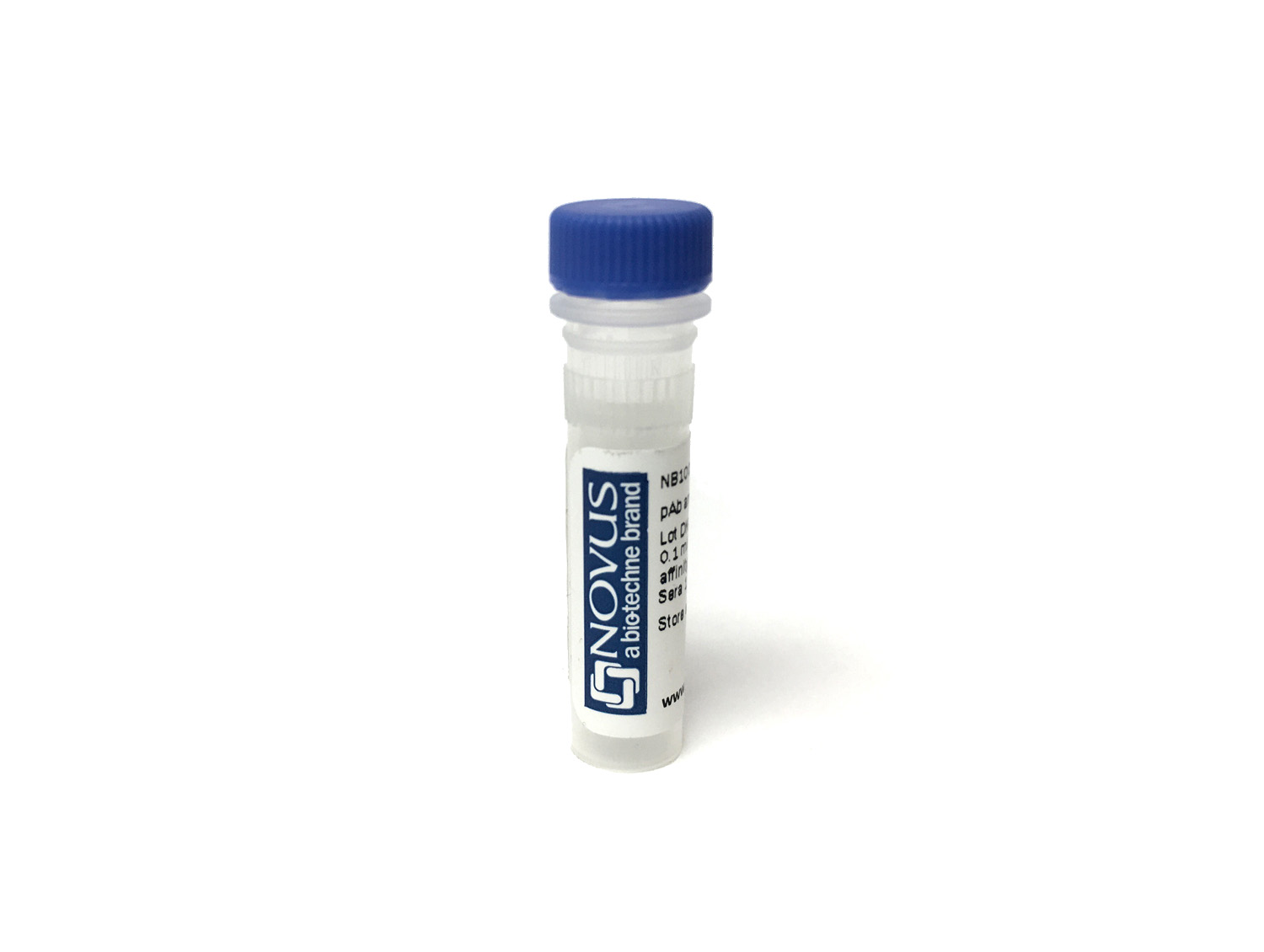IRE1 alpha [p Ser724] Antibody [DyLight 488]
Novus Biologicals, part of Bio-Techne | Catalog # NB100-2323G


Conjugate
Catalog #
Forumulation
Catalog #
Key Product Details
Species Reactivity
Validated:
Human, Mouse, Rat, Porcine, Drosophila, Goat, Golden Syrian Hamster, Mammal, Monkey, Primate, Rabbit
Applications
Chromatin Immunoprecipitation (ChIP), ELISA, Immunoblotting, Immunocytochemistry/ Immunofluorescence, Immunohistochemistry, Immunohistochemistry-Frozen, Immunohistochemistry-Paraffin, Immunoprecipitation, In vitro assay, Knockdown Validated, Western Blot
Label
DyLight 488 (Excitation = 493 nm, Emission = 518 nm)
Antibody Source
Polyclonal Rabbit IgG
Concentration
Please see the vial label for concentration. If unlisted please contact technical services.
Product Summary for IRE1 alpha [p Ser724] Antibody [DyLight 488]
Immunogen
This IRE1 alpha [p Ser724] antibody was raised against a synthetic peptide surrounding the phosphorylated serine 724 of the human IRE1 alpha protein. [Swiss-Prot #O75460]
Reactivity Notes
Use in Porcine reported in scientific literature (PMID:35492579).Drosophila reactivity reported in scientific literature (PMID: 31641108). Goat reactivity reported in scientific literature (PMID: 29046053). Use in Golden Syrian Hamster reported in scientific literature (PMID:31167774).
Modification
p Ser724
Localization
Endoplasmic reticulum
Specificity
NB100-2323 IRE1 alpha [p Ser724] Antibody detects IRE-1 alpha when phosphorylated at Ser724 residue.
Clonality
Polyclonal
Host
Rabbit
Isotype
IgG
Applications for IRE1 alpha [p Ser724] Antibody [DyLight 488]
Application
Recommended Usage
Chromatin Immunoprecipitation (ChIP)
Optimal dilutions of this antibody should be experimentally determined.
ELISA
Optimal dilutions of this antibody should be experimentally determined.
Immunoblotting
Optimal dilutions of this antibody should be experimentally determined.
Immunocytochemistry/ Immunofluorescence
Optimal dilutions of this antibody should be experimentally determined.
Immunohistochemistry
Optimal dilutions of this antibody should be experimentally determined.
Immunohistochemistry-Frozen
Optimal dilutions of this antibody should be experimentally determined.
Immunohistochemistry-Paraffin
Optimal dilutions of this antibody should be experimentally determined.
Immunoprecipitation
Optimal dilutions of this antibody should be experimentally determined.
In vitro assay
Optimal dilutions of this antibody should be experimentally determined.
Knockdown Validated
Optimal dilutions of this antibody should be experimentally determined.
Western Blot
Optimal dilutions of this antibody should be experimentally determined.
Application Notes
Optimal dilution of this antibody should be experimentally determined.
Please Note: Optimal dilutions of this antibody should be experimentally determined.
Formulation, Preparation, and Storage
Purification
Immunogen affinity purified
Formulation
50mM Sodium Borate
Preservative
0.05% Sodium Azide
Concentration
Please see the vial label for concentration. If unlisted please contact technical services.
Shipping
The product is shipped with polar packs. Upon receipt, store it immediately at the temperature recommended below.
Stability & Storage
Store at 4C in the dark.
Background: IRE1 alpha
Transcriptional activation of UPR-responsive genes are regulated by the ATF6 and IRE1-XBP1 pathways, which are often regulated by HIFs and contribute to cell survival under ER hypoxic stress (3). UPR signaling can a) inhibit protein translation to restore cell function, b) activate signaling to increase production of molecular chaperones for protein folding, and c) initiate ubiquitination signaling that leads to degradation of misfolded proteins in ER.
IRE1 alpha acts as the sensor of unfolded proteins in the ER. IRE1 alpha not only promotes cell survival but can initiate apoptosis when accumulation of unfolded proteins in the ER causes stress. IRE1 alpha is essential for viability under stress conditions that cause unfolded proteins to accumulate in the ER. IRE1 alpha is a transmembrane protein that has both serine-threonine kinase and endoribonuclease activities and has a theoretical molecular weight of 110 kDa. When detecting phospho-IRE1 alpha, it is recommended to normalize its band intensity with total IRE1 alpha.
References
1. Zheng, W., Xie, W., Yin, D., Luo, R., Liu, M., & Guo, F. (2019). ATG5 and ATG7 induced autophagy interplays with UPR via PERK signaling. Cell Commun Signal, 17(1), 42. doi:10.1186/s12964-019-0353-3
2. Cho, Y. M., Kim, D. H., Lee, K. H., Jeong, S. W., & Kwon, O. J. (2018). The IRE1alpha-XBP1s pathway promotes insulin-stimulated glucose uptake in adipocytes by increasing PPARgamma activity. Exp Mol Med, 50(8), 102. doi:10.1038/s12276-018-0131-0
3. Xia, Z., Wu, S., Wei, X., Liao, Y., Yi, P., Liu, Y., . . . Liu, J. (2019). Hypoxic ER stress suppresses beta-catenin expression and promotes cooperation between the transcription factors XBP1 and HIF1alpha for cell survival. J Biol Chem, 294(37), 13811-13821. doi:10.1074/jbc.RA119.008353
Long Name
Serine/threonine-protein kinase/endoribonuclease IRE1
Alternate Names
ERN1, hIRE1p, IRE1, Ire1-alpha
Gene Symbol
ERN1
Additional IRE1 alpha Products
Product Documents for IRE1 alpha [p Ser724] Antibody [DyLight 488]
Product Specific Notices for IRE1 alpha [p Ser724] Antibody [DyLight 488]
DyLight (R) is a trademark of Thermo Fisher Scientific Inc. and its subsidiaries.
This product is for research use only and is not approved for use in humans or in clinical diagnosis. Primary Antibodies are guaranteed for 1 year from date of receipt.
